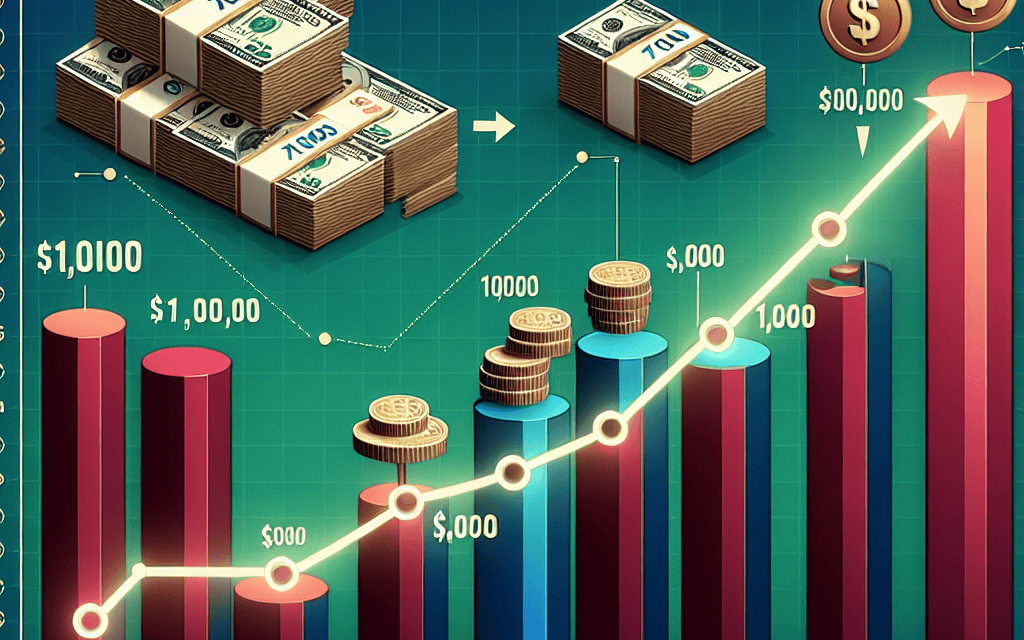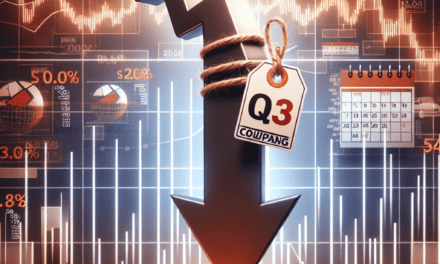“From $10K to a Fortune: The Apple Investment Journey Over a Decade”
Introduction
Investing in the stock market has long been a strategy for building wealth, and few companies have demonstrated the potential for significant returns like Apple Inc. A decade ago, Apple was already a dominant force in the technology sector, known for its innovative products and strong brand loyalty. For investors who recognized the company’s potential and invested $10,000 in Apple stock ten years ago, the returns have been remarkable. Over the past decade, Apple has continued to grow, driven by the success of its flagship products like the iPhone, iPad, and Mac, as well as its expansion into services and wearables. This growth has been reflected in its stock price, which has seen substantial appreciation. As of today, that initial $10,000 investment would have multiplied several times over, showcasing the power of long-term investing in a company that consistently delivers value to its shareholders.
Historical Growth Of Apple Stock Over The Past Decade
Investing in the stock market has long been a strategy for building wealth, and few companies have exemplified the potential for substantial returns as vividly as Apple Inc. Over the past decade, Apple has not only revolutionized technology but also delivered impressive financial returns to its investors. To understand the magnitude of Apple’s growth, consider a hypothetical scenario where an individual invested $10,000 in Apple stock a decade ago. This investment, made in October 2013, would have been a strategic decision, given Apple’s trajectory and market position at the time.
In 2013, Apple was already a dominant player in the technology sector, known for its innovative products such as the iPhone, iPad, and Mac computers. The company had a strong brand reputation and a loyal customer base, which contributed to its robust financial performance. At that time, Apple’s stock was trading at approximately $70 per share, adjusted for subsequent stock splits. Fast forward to October 2023, and Apple’s stock price has soared to around $170 per share, reflecting a significant appreciation in value.
To calculate the return on a $10,000 investment in Apple stock from 2013 to 2023, it is essential to consider both the appreciation in stock price and the impact of stock splits. Apple executed a 7-for-1 stock split in 2014 and a 4-for-1 stock split in 2020. These splits increased the number of shares held by investors without altering the overall value of their holdings. Consequently, an investor who purchased approximately 142 shares in 2013 would now own 3,976 shares due to these splits.
The appreciation in Apple’s stock price, combined with the increased number of shares, results in a substantial return on investment. As of October 2023, the initial $10,000 investment would be worth approximately $675,920. This remarkable growth underscores Apple’s ability to consistently deliver value to its shareholders through strategic innovation, market expansion, and effective management.
Several factors have contributed to Apple’s impressive stock performance over the past decade. First and foremost, the company’s commitment to innovation has been a driving force. Apple has continually introduced new products and services, such as the Apple Watch, AirPods, and Apple Music, which have not only diversified its revenue streams but also strengthened its ecosystem. Additionally, Apple’s focus on enhancing user experience and maintaining a premium brand image has allowed it to command higher prices and sustain strong profit margins.
Moreover, Apple’s expansion into international markets has played a crucial role in its growth. The company has successfully tapped into emerging markets, particularly in Asia, where rising disposable incomes and increasing smartphone penetration have fueled demand for its products. This global reach has enabled Apple to mitigate risks associated with market saturation in developed regions.
Furthermore, Apple’s financial management has been exemplary, characterized by prudent capital allocation and shareholder-friendly policies. The company has consistently generated substantial cash flows, which it has used to fund share buybacks and dividends, thereby enhancing shareholder value. These initiatives have not only boosted investor confidence but also contributed to the upward trajectory of Apple’s stock price.
In conclusion, a $10,000 investment in Apple a decade ago would have yielded extraordinary returns, reflecting the company’s remarkable growth and resilience in the ever-evolving technology landscape. Apple’s success story serves as a testament to the power of innovation, strategic expansion, and sound financial management in driving long-term shareholder value. As investors look to the future, Apple’s continued commitment to these principles will likely remain a key determinant of its stock performance.
Calculating The Return On A $10,000 Investment In Apple
Investing in the stock market has long been a strategy for building wealth, and few companies have demonstrated the potential for substantial returns as clearly as Apple Inc. Over the past decade, Apple has not only revolutionized the technology industry but has also provided significant returns to its investors. To understand the magnitude of these returns, consider a hypothetical scenario where an individual invested $10,000 in Apple stock ten years ago. By examining the growth of this investment, we can gain insights into the power of long-term investing and the factors that have contributed to Apple’s success.
In October 2013, Apple’s stock was trading at approximately $70 per share, adjusted for subsequent stock splits. With a $10,000 investment, an investor could have purchased around 142 shares. Fast forward to October 2023, and Apple’s stock price has soared to approximately $170 per share. This remarkable increase in stock price reflects a combination of Apple’s innovative product launches, strategic business decisions, and its ability to maintain a loyal customer base. Consequently, the initial investment of $10,000 would now be worth approximately $24,140, representing a return of over 140%.
Several factors have contributed to Apple’s impressive performance over the past decade. Firstly, the company’s consistent innovation has played a crucial role. With the introduction of groundbreaking products such as the Apple Watch, AirPods, and various iterations of the iPhone and iPad, Apple has continually set new standards in the technology sector. These products have not only driven sales but have also strengthened Apple’s brand image as a leader in innovation and design.
Moreover, Apple’s strategic expansion into services has further bolstered its financial performance. The company has successfully diversified its revenue streams by offering services such as Apple Music, iCloud, and the App Store. This shift towards services has provided a steady and growing source of income, reducing Apple’s reliance on hardware sales and enhancing its overall profitability.
In addition to product innovation and service expansion, Apple’s commitment to shareholder value has been evident through its capital return programs. Over the past decade, Apple has consistently returned capital to shareholders through dividends and share buybacks. These initiatives have not only rewarded investors but have also contributed to the appreciation of Apple’s stock price by reducing the number of outstanding shares and increasing earnings per share.
Furthermore, Apple’s global reach and strong brand loyalty have enabled it to navigate economic challenges and maintain a competitive edge. The company’s ability to adapt to changing market conditions and consumer preferences has been instrumental in sustaining its growth trajectory. As a result, Apple has remained a dominant player in the technology industry, attracting both individual and institutional investors.
In conclusion, a $10,000 investment in Apple a decade ago would have yielded substantial returns, highlighting the potential benefits of long-term investing in a company with a proven track record of innovation and strategic growth. While past performance is not indicative of future results, Apple’s success story underscores the importance of identifying companies with strong fundamentals and the ability to adapt to an ever-evolving market landscape. As investors continue to seek opportunities in the stock market, Apple’s journey serves as a testament to the rewards that can be reaped from patience, foresight, and a commitment to investing in quality companies.
Factors Contributing To Apple’s Stock Performance
Investing in the stock market has always been a topic of great interest, particularly when it comes to high-performing companies like Apple Inc. A decade ago, a $10,000 investment in Apple would have been a strategic decision that, as of today, would have yielded substantial returns. To understand the factors contributing to Apple’s impressive stock performance, it is essential to examine the company’s innovative product line, strategic business decisions, and market adaptability.
Firstly, Apple’s commitment to innovation has been a cornerstone of its success. Over the past decade, the company has consistently introduced groundbreaking products that have captivated consumers worldwide. The launch of the iPhone, iPad, and Apple Watch, among other devices, has not only expanded Apple’s product portfolio but also solidified its reputation as a leader in technology. These products have not only generated significant revenue but have also created a loyal customer base, eager to invest in the latest Apple offerings. This continuous cycle of innovation and consumer demand has played a crucial role in driving Apple’s stock price upward.
In addition to product innovation, Apple’s strategic business decisions have significantly contributed to its stock performance. The company has made calculated moves to diversify its revenue streams, reducing its reliance on any single product. For instance, Apple’s expansion into services such as Apple Music, iCloud, and the App Store has provided a steady stream of income, cushioning the company against fluctuations in hardware sales. This diversification strategy has not only enhanced Apple’s financial stability but has also made it an attractive option for investors seeking long-term growth.
Moreover, Apple’s adeptness at navigating the global market has further bolstered its stock performance. The company has successfully penetrated emerging markets, particularly in Asia, where the demand for smartphones and technology is rapidly increasing. By tailoring its products and marketing strategies to suit local preferences, Apple has managed to capture a significant share of these markets. This global expansion has not only increased Apple’s revenue but has also contributed to its stock’s resilience in the face of economic uncertainties.
Furthermore, Apple’s strong brand identity and marketing prowess cannot be overlooked as factors contributing to its stock performance. The company’s ability to create a sense of exclusivity and desirability around its products has been instrumental in maintaining high consumer demand. Apple’s marketing campaigns, characterized by sleek design and compelling narratives, have consistently reinforced the brand’s image as a symbol of innovation and quality. This strong brand equity has translated into sustained investor confidence, further driving up the stock price.
Additionally, Apple’s financial management and shareholder-friendly policies have played a significant role in its stock performance. The company has consistently demonstrated strong financial health, with substantial cash reserves and a robust balance sheet. This financial strength has enabled Apple to invest in research and development, pursue strategic acquisitions, and return value to shareholders through dividends and stock buybacks. These actions have not only enhanced shareholder value but have also contributed to the stock’s attractiveness as a long-term investment.
In conclusion, a $10,000 investment in Apple a decade ago would have grown significantly, thanks to a combination of factors that have driven the company’s stock performance. From relentless innovation and strategic diversification to global market expansion and strong brand identity, Apple has consistently demonstrated its ability to adapt and thrive in a competitive landscape. As a result, investors who recognized these strengths early on have reaped substantial rewards, underscoring the importance of understanding the factors that contribute to a company’s success in the stock market.
Comparing Apple’s Growth To Other Tech Giants

Investing in technology stocks has long been a popular strategy for those seeking substantial returns, and Apple Inc. has consistently been at the forefront of this trend. A decade ago, in 2013, Apple was already a well-established player in the tech industry, yet its potential for growth was still immense. If an investor had placed $10,000 into Apple stock at that time, the value of that investment today would be a testament to the company’s remarkable trajectory. To understand this growth, it is essential to compare Apple’s performance with that of other tech giants over the same period.
In 2013, Apple was trading at approximately $60 per share, adjusted for subsequent stock splits. Fast forward to 2023, and Apple’s stock price has soared, reflecting the company’s robust financial health and innovative prowess. As of October 2023, Apple’s stock is trading at around $170 per share. This increase represents a nearly threefold rise in stock value, translating a $10,000 investment into approximately $28,333, not accounting for dividends. This impressive growth can be attributed to several factors, including Apple’s consistent product innovation, expansion into new markets, and a strong brand loyalty that has kept consumers and investors alike engaged.
When comparing Apple’s growth to other tech giants, such as Microsoft, Amazon, and Alphabet (Google’s parent company), it becomes evident that while each has experienced significant growth, the paths they have taken differ. Microsoft, for instance, has seen its stock price increase from around $30 in 2013 to over $300 in 2023. This tenfold increase is largely due to its successful transition to cloud computing and enterprise services, which have become major revenue drivers. Consequently, a $10,000 investment in Microsoft a decade ago would now be worth approximately $100,000, showcasing an even more dramatic growth than Apple.
Similarly, Amazon’s stock has experienced substantial appreciation, driven by its dominance in e-commerce and cloud services through Amazon Web Services (AWS). In 2013, Amazon’s stock was priced at about $260 per share, and by 2023, it has risen to over $3,000 per share. This growth means that a $10,000 investment in Amazon would now be valued at approximately $115,385, highlighting the company’s exceptional expansion and market influence.
Alphabet, on the other hand, has also demonstrated significant growth, with its stock price increasing from around $800 in 2013 to over $2,700 in 2023. This growth is fueled by its stronghold in digital advertising and strategic investments in various technology sectors. A $10,000 investment in Alphabet would now be worth approximately $33,750, reflecting a solid return, albeit not as pronounced as Microsoft’s or Amazon’s.
In conclusion, while a $10,000 investment in Apple a decade ago would have yielded substantial returns, the comparison with other tech giants reveals varying degrees of growth and success. Each company’s unique strategies and market positions have influenced their stock performance, offering investors different opportunities and challenges. Apple’s consistent innovation and brand strength have ensured its place as a leading tech giant, while Microsoft’s, Amazon’s, and Alphabet’s distinct approaches have also proven highly rewarding for investors. This analysis underscores the dynamic nature of the tech industry and the potential for significant financial gains through strategic investments.
The Impact Of Dividends On Apple’s Total Return
Investing in the stock market has long been a strategy for building wealth, and few companies have exemplified the potential for substantial returns as well as Apple Inc. Over the past decade, Apple has not only revolutionized technology but also delivered impressive financial returns to its shareholders. A $10,000 investment in Apple ten years ago would have grown significantly, and a key component of this growth is the impact of dividends on the company’s total return.
To understand the full scope of Apple’s financial performance, it is essential to consider both capital appreciation and dividends. Capital appreciation refers to the increase in the stock’s price over time, while dividends are periodic payments made to shareholders from a company’s earnings. Apple, known for its innovative products and strong market presence, has seen its stock price soar over the past decade. However, the role of dividends in enhancing total returns should not be underestimated.
In 2012, Apple reinstated its dividend program after a hiatus of nearly two decades. This decision marked a significant shift in the company’s approach to shareholder returns. Since then, Apple has consistently increased its dividend payouts, reflecting its robust financial health and commitment to returning value to shareholders. For investors who purchased Apple stock a decade ago, these dividends have contributed to a substantial portion of their total return.
To illustrate, consider the hypothetical scenario of a $10,000 investment in Apple made in 2013. At that time, Apple’s stock was trading at approximately $60 per share, adjusted for subsequent stock splits. Over the years, the stock price has experienced remarkable growth, driven by the company’s continuous innovation and expansion into new markets. As of 2023, Apple’s stock price has increased several-fold, significantly boosting the initial investment’s value.
However, the impact of dividends on this investment cannot be overlooked. Since 2012, Apple has consistently paid and increased its dividends, providing a steady stream of income to shareholders. These dividends, when reinvested, have the potential to compound over time, further enhancing the total return on investment. Reinvesting dividends allows investors to purchase additional shares, which in turn generate more dividends, creating a cycle of growth that amplifies the overall return.
Moreover, Apple’s dividend policy has been a testament to its financial strength and stability. The company’s ability to generate substantial cash flow has enabled it to maintain and increase dividend payouts even during challenging economic periods. This reliability has made Apple an attractive choice for income-focused investors seeking both growth and stability.
In conclusion, a $10,000 investment in Apple a decade ago would have yielded impressive returns, driven by both capital appreciation and the impact of dividends. While the stock’s price growth is often highlighted, the role of dividends in enhancing total returns is equally significant. Apple’s commitment to returning value to shareholders through dividends has not only provided a steady income stream but also contributed to the compounding effect that amplifies long-term gains. As investors consider the potential of investing in Apple or similar companies, understanding the dual impact of capital appreciation and dividends is crucial for making informed decisions that align with their financial goals.
Lessons From Apple’s Decade-Long Investment Journey
Investing in the stock market has long been a strategy for building wealth, and few companies have exemplified the potential for substantial returns as Apple Inc. Over the past decade, Apple has not only revolutionized technology but also delivered impressive financial returns to its investors. To understand the magnitude of these returns, consider a hypothetical scenario: an individual who invested $10,000 in Apple stock ten years ago. This investment journey offers valuable lessons for both seasoned and novice investors alike.
A decade ago, in 2013, Apple was already a dominant player in the technology sector, known for its innovative products like the iPhone, iPad, and MacBook. Despite its established reputation, the company continued to push the boundaries of technology, introducing new products and services that captivated consumers worldwide. This relentless innovation, coupled with strategic business decisions, played a crucial role in driving Apple’s stock price upward over the years.
Fast forward to today, and that initial $10,000 investment in Apple would have grown significantly. As of October 2023, Apple’s stock has appreciated considerably, reflecting the company’s robust financial performance and market dominance. While exact figures can fluctuate due to market conditions, it is estimated that the investment would be worth several times the original amount, potentially exceeding $100,000. This remarkable growth underscores the power of long-term investing and the importance of choosing companies with strong fundamentals and growth potential.
One of the key lessons from Apple’s investment journey is the significance of innovation and adaptability. Throughout the past decade, Apple has consistently introduced groundbreaking products and services, such as the Apple Watch, AirPods, and various iterations of the iPhone. These innovations have not only driven consumer demand but also solidified Apple’s position as a leader in the technology industry. For investors, this highlights the importance of selecting companies that prioritize research and development, as well as those that can adapt to changing market dynamics.
Moreover, Apple’s commitment to shareholder value has been evident through its capital return programs, including dividends and share buybacks. These initiatives have provided additional returns to investors, further enhancing the overall value of their investment. This aspect of Apple’s strategy illustrates the benefit of investing in companies that prioritize returning capital to shareholders, as it can significantly impact the total return on investment.
Another lesson from Apple’s decade-long investment journey is the value of patience and long-term perspective. The stock market is inherently volatile, with prices subject to fluctuations due to various factors, including economic conditions and investor sentiment. However, Apple’s performance over the past ten years demonstrates that a long-term investment approach can yield substantial rewards, even amidst short-term market volatility. Investors who remained committed to their Apple holdings were able to capitalize on the company’s sustained growth and innovation.
In conclusion, the hypothetical $10,000 investment in Apple a decade ago serves as a compelling case study for the benefits of long-term investing in innovative companies. Apple’s journey over the past ten years highlights the importance of selecting companies with strong growth potential, a commitment to innovation, and a focus on shareholder value. For investors seeking to build wealth in the stock market, these lessons from Apple’s investment journey offer valuable insights into the strategies that can lead to financial success.
Future Prospects For Apple Investors
Investing in the stock market has always been a topic of great interest and speculation, particularly when it comes to technology giants like Apple Inc. Over the past decade, Apple has not only revolutionized the tech industry but has also provided substantial returns to its investors. To understand the potential future prospects for Apple investors, it is insightful to examine the historical performance of Apple’s stock. Specifically, a $10,000 investment in Apple a decade ago would have grown significantly, illustrating the company’s robust growth trajectory and its potential for future gains.
In October 2013, Apple’s stock was trading at approximately $75 per share, adjusted for subsequent stock splits. Fast forward to October 2023, and the stock price has soared to around $175 per share. This remarkable increase in stock value reflects Apple’s consistent innovation, strategic market positioning, and its ability to capture consumer loyalty. Consequently, a $10,000 investment in Apple in 2013 would be worth approximately $23,333 today, assuming dividends were reinvested. This represents a compound annual growth rate (CAGR) of about 9.1%, a testament to Apple’s strong financial performance and market dominance.
The factors contributing to Apple’s impressive growth over the past decade are multifaceted. Firstly, the company’s relentless focus on innovation has led to the development of groundbreaking products such as the iPhone, iPad, and Apple Watch. These products have not only generated substantial revenue but have also created a loyal customer base that continues to drive sales. Additionally, Apple’s expansion into services, including the App Store, Apple Music, and iCloud, has diversified its revenue streams and reduced its reliance on hardware sales. This strategic shift towards services has provided a steady and recurring income, further enhancing the company’s financial stability.
Moreover, Apple’s commitment to sustainability and environmental responsibility has resonated well with consumers and investors alike. By prioritizing eco-friendly practices and setting ambitious goals for carbon neutrality, Apple has positioned itself as a leader in corporate social responsibility. This commitment not only enhances the company’s brand image but also attracts socially conscious investors who prioritize environmental, social, and governance (ESG) factors in their investment decisions.
Looking ahead, the future prospects for Apple investors appear promising. The company’s continued investment in research and development suggests that it will remain at the forefront of technological innovation. With advancements in artificial intelligence, augmented reality, and health technology, Apple is well-positioned to capitalize on emerging trends and expand its product offerings. Furthermore, the company’s strong financial position, characterized by substantial cash reserves and minimal debt, provides it with the flexibility to pursue strategic acquisitions and invest in new growth opportunities.
In conclusion, a $10,000 investment in Apple a decade ago would have yielded significant returns, underscoring the company’s remarkable growth and resilience. As Apple continues to innovate and adapt to changing market dynamics, its future prospects remain bright. While past performance is not indicative of future results, the company’s strong fundamentals and strategic vision suggest that it will continue to be a compelling investment opportunity for those seeking long-term growth. As always, potential investors should conduct thorough research and consider their risk tolerance before making investment decisions.
Q&A
1. **Question:** How much was Apple’s stock price approximately a decade ago?
**Answer:** Around October 2013, Apple’s stock price was approximately $70 per share, adjusted for splits.
2. **Question:** How many shares would a $10,000 investment have purchased a decade ago?
**Answer:** A $10,000 investment would have purchased approximately 142 shares of Apple at $70 per share.
3. **Question:** What stock splits has Apple undergone in the past decade?
**Answer:** Apple has undergone a 7-for-1 stock split in 2014 and a 4-for-1 stock split in 2020.
4. **Question:** How many shares would the initial investment have grown to after these splits?
**Answer:** After the splits, the initial 142 shares would have grown to 3,976 shares (142 shares * 7 * 4).
5. **Question:** What is Apple’s stock price as of the latest available data in 2023?
**Answer:** As of October 2023, Apple’s stock price is approximately $170 per share.
6. **Question:** What would be the total value of the investment today?
**Answer:** The total value of the investment today would be approximately $675,920 (3,976 shares * $170 per share).
7. **Question:** What is the approximate annualized return on this investment over the decade?
**Answer:** The approximate annualized return on this investment over the decade is around 32%.
Conclusion
A $10,000 investment in Apple a decade ago, assuming the investment was made in October 2013, would have grown significantly by October 2023. Over this period, Apple’s stock has experienced substantial appreciation due to factors such as strong financial performance, successful product launches, and overall market growth. Considering Apple’s stock price appreciation, stock splits, and dividends, the investment would likely have increased several times over. While the exact value would depend on the specific purchase date and any reinvestment of dividends, it is reasonable to conclude that the investment would be worth significantly more than the initial $10,000, potentially exceeding $50,000 or more, reflecting Apple’s robust growth and market position over the past decade.





